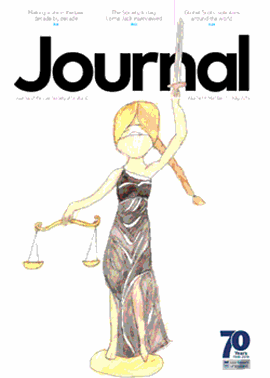The opportunity to rectify wills was welcomed amongst most private client trust and estate practitioners when it was introduced in late 2016.
At last, here was an alternative way to deal with defects in wills that had the potential to plague the administration of a client’s estate through uncertainty and disputes. Five months on from the introduction of the Succession (Scotland) Act 2016, there have been no reported decisions or guidance from the Court of Session or sheriff court as to how the rules are to be applied. This article reflects on some of the practical considerations in making an application for rectification to the court.
What are the rules?
Rectification, under s 3 of the 2016 Act, is available where the following criteria are fulfilled:
- the testator died domiciled in Scotland,
- the will was drafted by a third party, and
- there is sufficient proof to satisfy the court that the will fails to express the testator’s instructions.
How will it work in practice?
It’s quite common that the first element may not be clear as a person’s business and family connections may be spread over more than one jurisdiction. That, however, is not the main focus of this article.
The second requirement should be reasonably clear. It is important, however, to note that these provisions do not protect those who take a “DIY approach” to getting their affairs in order. If you do it yourself and get it wrong, the 2016 Act does not apply.
It is the third part that may prove to be a problem in applications for rectification. To succeed, the evidence must be strong and, undoubtedly, there is scope for dispute amongst those with a potential interest in the deceased’s estate. Additionally, there are other issues to consider, including client confidentiality and professional privilege. This could mean that evidence such as a solicitor’s file note or correspondence may not be straightforward for a potentially disappointed beneficiary to access.
Some examples
The will provides for legacies to several grandchildren of, say, £1,000 each. One of those mentioned has no amount specified. It should be fairly straightforward to show that this grandchild was intended to receive the same sum as the others.
If, however, the will provided for legacies to some named grandchildren but one grandchild was omitted, the applicant would require to satisfy the court that the omission was made in error and not deliberately.
Another example would be where fractions or percentage shares in the residue exceed the whole. Evidence of what was intended could provide the correct proportions. Alternatively, where a legacy or other clause has been mistakenly deleted by a solicitor, resulting in partial intestacy, evidence may be able to demonstrate that this deletion was contrary to the intention of the testator and the will should be rectified.
Like any litigation, the rectification process carries risk and can potentially be costly. In these cases, specifically, it can also be clouded by questions of conflict of interest if the firm which is alleged to have made the error is still involved in some way.
These provisions, however, provide a welcome solution but they could bring their own challenges for those dealing with the administration of estates.
In this issue
- Family law: still scope for reform
- People's court
- The importance of lawyers in a democratic society
- Thy will be done
- Children's rights and physical punishment
- Pension sharing and professional negligence
- Reading for pleasure
- Opinion: Bruce Adamson
- Book reviews
- Profile
- President's column
- People on the move
- 400 years – still innovating
- Litigation: a bill to settle
- Access to justice: the small print
- Benefits of devolution
- The changing role of the courts in our democracy
- Core values
- The will bank opportunity
- Deep and meaningful
- The fall and rise of interrogatories
- To act or not to act?
- Immigration issues: more red tape
- Taxman scores winner in Rangers contest
- EIA: the regimes change
- Scottish Solicitors' Discipline Tribunal
- Practitioners or salesmen?
- Where the buck stops
- Law reform roundup
- Cyber basics for lawyers
- Practice points from missives review
- Money laundering update: new regulations in force
- Courts raise the stakes
- May: the force be not with you
- Conference success
- SYLA: 2016-17 in focus
- Ask Ash







